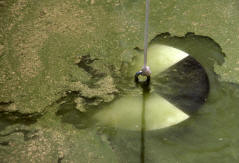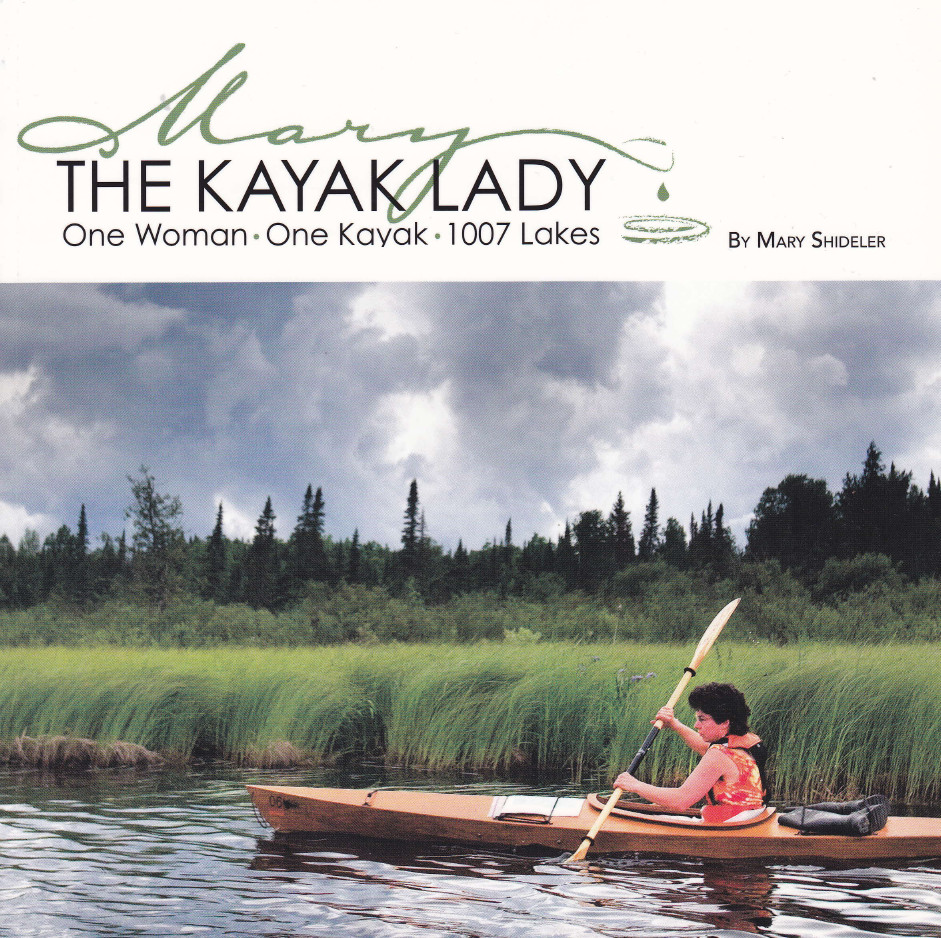While the idea is to get accurate Secchi depth readings, not try to break records, the Secchi disk lends itself to claims of being the record maximum (or minimum depth). We welcome other Secchi records as well. We accept claims with some evidence of documentation; “official” records must be from a published article. Submit any claims to secchidipin@nalms.org
Theoretical Maximum Secchi Depth
If you could lower a Secchi disk into absolutely pure water, the theoretical maximum value would be between 70-80 meters (230-262 ft).
Deepest Recorded Secchi Depth
80 meters on October 13, 1986 in the Weddell Sea, near Antarctica (W.W.C. Gieskes, C. Veth, A. Woehr-mann, and M.Graefe, EOS, 1987). Citation courtesy of Hendrik Buiteveld.
“About 70 meters” is reported in the Sargasso Sea, using a 1.2 m disk. Mahon Kelly, (Personal Communication)
66 meters (217 feet) in the Sargasso Sea (Taber and Dubach 1972)
53 m (174 ft) in the eastern Mediterranean (Berman et al. (1985)
44 m (144 ft) was obtained in Crater Lake, Oregon, using a 1 m diameter disk. Larson (1972) At the same time, Doug recorded 39 meters (128 ft) with a 20 cm disk.
33 m (108 ft), Lake Tahoe, John LaConte using 9.5 inch (24 cm) dinner plate in 1873.
Smallest Secchi Depth
1-2 cm (0.4-0.8 in) in Spirit Lake, Washington, after the eruption of Mt. St Helens (Doug Larson, Personal Communication). The water of the lake was colored black by the decaying trees in the lake.
 |
Disk disappearing under an algal scum in Crystal Lake, Ohio |
3-5 cm (1.2-2 in) in “puddles” in Kenya (Orlando Sarnelle, Personal Communication).
8 cm in a Nebraska reservoir made turbid by suspended silts and clays (Chris Holdren, Personal Communication).
10 cm in aquaculture pond, Delaware State University by R. Carlson (Personal Communication). The chlorophyll concentration was 558 µg/L (J. Shalles, Personal Communication).
Perhaps the strangest unofficial record for shallow Secchi depths should be given to Bob Kortmann (Personal communication), who, lowering his disk through foam generated by a blue-green die-off, reported a Secchi depth of minus 5 inches; the disk disappeared before ever reaching the water!
Smallest Secchi Disk
2 cm used by R. Carlson to measure strength of coffee.
2.5 to 5 cm used in small puddles (Richard Hill, Personal communication).
10 cm by E. A. Birge and C. Juday, in Lake Mendota, Wisconsin in the fall of 1900 (Hutchinson 1957; Lathrop 1992).
Largest Secchi Disk
1.52 m (5 feet), Tyler Durban, Lake Tahoe, July, 2012.
1.2 m, Mahon Kelly (personal communication).
Most Secchi Depth Readings in a Day by an Individual
532 measurements in a single day by a single volunteer by Gerrit Vershuur (Vershuur 1997)
Most Secchi Depth Readings in a Year by an Individual
3,510 readings (October 1994 – August 1995) Garner Lake, Tennessee by Gerrit Vershuur (Vershuur 1997).
Most Sites Sampled by a Single Individual
1,007 lakes in a single county (Itasca County, MN) by Mary Shideler, MN Citizens Lake Monitoring Program volunteer.

Mary Schideler, “The Kayak Lady,” sampled 1,007 lakes (marythekayaklady.com)
Most Volunteers Sampling on a Single Day
Not known.
Literature Cited
Berman, T., P.D. Walline, A. Schneller, J. Rothenberg, and D.W. Townsend. 1985. Secchi disk depth record: a claim for the eastern Mediterranean. Limnol. Oceanogr. 30: 447-448.
Gieskes, W.W.C., C. Veth, A. Woehrmann, and M.Graefe 1987. Secchi disc visibility world record Shattered. EOS, Transactions, American Geophysical Union. 68:123.
Hutchinson, G.E. 1957. A Treatise on Limnology. Vol. 1. Geography, Physics, and Chemistry. John Wiley & Sons.
Lathrop, R.C. 1992. Nutrient loadings, lake nutrients, and water clarity. In: J.F. Kitchell. Food web management: A case study of Lake Mendota . Springer-Verlag
Larson, D.W. 1972. Temperature, transparency, and phytoplankton productivity in Crater Lake, Oregon. Limnol. Oceanogr. 17: 410-417.
Le Conte, J. 1883. Physical studies of Lake Tahoe. Part 1. Overland Monthly 2: 506-516.
Taber, R.W. and H.W. Dubach. 1972. 1001 Questions Answered about the Oceans and Oceanography. Dodd, Mead.
Vershuur, G.L. 1997. Transparency relationships in Garner Lake, Tennessee: the relationship between Secchi depth and solar altitude and a suggestion for normalization of Secchi depth data. Journal of Lake and Reservoir Management. 13(2):142-153.

